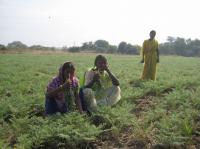-
View Mobile Number info@shrishailherbs.net
Scope of Medicinal Plants Cultivation
India has a rich resource of medicinal plants with its diverse climatic conditions, varied soil structures and great biodiversity with more than 40000 species of plants found all over the region. It has even richer and oldest tradition in the use of medicinal plants with Ayurvedic literature as its base.It has become an intergral part of India�s culture as seen in the form of use of home remedies. .It is passed on by word of mouth from one generation to another.
With the advent of Modern medicine and neglect of our rich resources including Ayurved by successive governments, we are forced to accept conventional modern medicine. Entire world has now woken up to the harsh realities and growing awareness about serious toxicities of synthetic drugs. With the world wide interest in �Ayurved� (Herbals) medicinal plants have again found its lost glory. But with more than 90% of drugs used by the fast growing Ayurvedic and Herbal manufacturing units coming from forests and deforestation and over exploitation of medicinal plants with improper harvesting techniques this vast resource base of valuable medicinal plants is fast dwindling.
Apart from requirement of medicinal plants for internal consumption and ever increasing demand of natural food, natural flavours, herbal cosmetic products, Natural Perfumes, Herbal Toiletries etc. For meeting the demand of ever increasing International market,growing medicinal herbs is an economically viable proposition.
Benefits of Medicinal plants cultivation
Major Constraints
Suggestions for farmers taking up Medicinal plant cultivation
We at �Shri Shail Medi Farms,� have initiated cultivation of many medicinal plants like Ashwagandha, Coleus , Tulsi, Bramhi, Mushali etc. way back in 1996 and are now associated with more than 200 farmers, cultivating in more than 50 acres many of them with Buy-back facility. We have developed a herbal garden having more than 300 species of medicinal plants, and a nursery of about 150 species of medicinal plants.
We have also been involved in various training activities through ngo UPAVAN, regarding collection and cultivation of medicinal plants. Training to many farmers, Ngos, government employees, Forest employees etc. is an ongoing acivity. Vidarbha, in Maharashtra State is considered as backward region in Maharashtra. It has thick forest cover and hence it can be considered as a major supplier of medicinal herbs.It has immense potential to emerge as a quality medicinal plant cluster for cultivated herbs as well. Our past experience of growing the medicinal herbs in this region see a lot of potential from the species like :
We can add many more species in future and will add value to the medicinal herbs grown or collected at the field level. However, lack of an organized supply chain in the area, have constrained the growth of sector in the region.
With the advent of Modern medicine and neglect of our rich resources including Ayurved by successive governments, we are forced to accept conventional modern medicine. Entire world has now woken up to the harsh realities and growing awareness about serious toxicities of synthetic drugs. With the world wide interest in �Ayurved� (Herbals) medicinal plants have again found its lost glory. But with more than 90% of drugs used by the fast growing Ayurvedic and Herbal manufacturing units coming from forests and deforestation and over exploitation of medicinal plants with improper harvesting techniques this vast resource base of valuable medicinal plants is fast dwindling.
Apart from requirement of medicinal plants for internal consumption and ever increasing demand of natural food, natural flavours, herbal cosmetic products, Natural Perfumes, Herbal Toiletries etc. For meeting the demand of ever increasing International market,growing medicinal herbs is an economically viable proposition.
Benefits of Medicinal plants cultivation
- Most of the medicinal plants can be planted in low or medium quality soils.
- Can be cultivated as intercropping method.
- Most of them are perennials.
- Many of them do not require protection from animals.
- Only organic fertilizers and pesticides are used. Which maintains soil structure.
Major Constraints
- Proper identification of specie to be cultivated is of utmost importance.
- Know-how about Market demand and supply is very much essential.
- Knowledge about which plant part you are going to sale and how it is sold should be gained.
- Non availability of quality planting material of improved varieties.
Suggestions for farmers taking up Medicinal plant cultivation
- Start with a small area preferably 1 acre.
- As far as possible take up cultivation on a group basis to facilitate marketing of produce.
- Pay attention to the quality of your produce. Only quality will decide rate and marketability of your produce.
- Get a buy-back arrangement of your produce or confirm about assured market
- Knowledge about proper harvesting time, proper drying methods, and proper storage
We at �Shri Shail Medi Farms,� have initiated cultivation of many medicinal plants like Ashwagandha, Coleus , Tulsi, Bramhi, Mushali etc. way back in 1996 and are now associated with more than 200 farmers, cultivating in more than 50 acres many of them with Buy-back facility. We have developed a herbal garden having more than 300 species of medicinal plants, and a nursery of about 150 species of medicinal plants.
We have also been involved in various training activities through ngo UPAVAN, regarding collection and cultivation of medicinal plants. Training to many farmers, Ngos, government employees, Forest employees etc. is an ongoing acivity. Vidarbha, in Maharashtra State is considered as backward region in Maharashtra. It has thick forest cover and hence it can be considered as a major supplier of medicinal herbs.It has immense potential to emerge as a quality medicinal plant cluster for cultivated herbs as well. Our past experience of growing the medicinal herbs in this region see a lot of potential from the species like :
- Ashwagandha (Withania somnifera)
- Coleus (Coleus forskohli)
- Kavach beej (Mucuna pruriens)
- Tulsi (Ocimum sanctum)
- Mushali (Chlorophytum borivilianum)
- Guggul (Commiphora mukul)
- Chirayta (Andrographis paniculata)
- Shatavari (Asparagus racemosus)
- Musk dana (Abelmoschus moschatus)
- Lemon grass (Cymbopogon flexuosus)
- Palmarosha (Cymbopogon martinii)
- Citronella (Cymbopogon winterianus)
- Pimpali (Piper longum)
- Sarpagandha (Rauvolfia serpentina)
- Vacha (Acorus calamus)
- Brahmi ( Bacopa monnieri)
We can add many more species in future and will add value to the medicinal herbs grown or collected at the field level. However, lack of an organized supply chain in the area, have constrained the growth of sector in the region.
-
Ashwagandha Cultivation
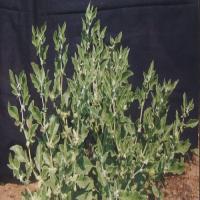
-
Mandukaparni Cultivation
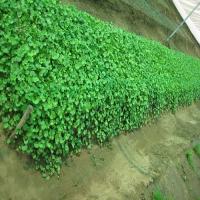
-
Tulsi Cultivation
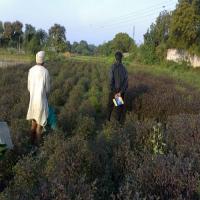
-
Vekhand Cultivation
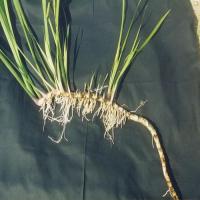
-
Collection of Medicinal Herbs
